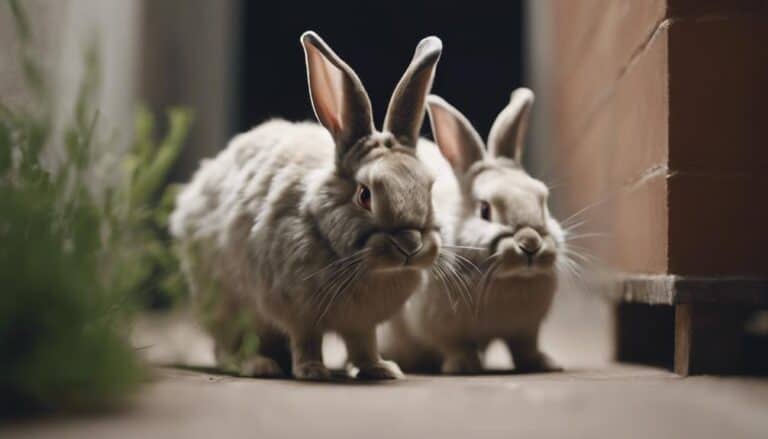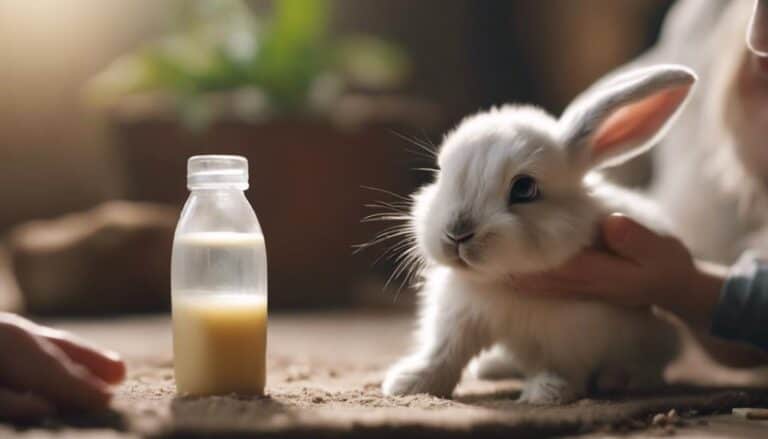So you're wondering whether your rabbit should live indoors or outdoors? That's a big decision, and it's crucial to think it through carefully.
The choice you make will affect your rabbit's safety, activity levels, and overall happiness.
First, you need to consider the pros and cons of each option.
If you're thinking of keeping your rabbit indoors, you'll need to make sure your home is rabbit-proofed. That means removing any hazardous items, securing wires and toxic substances, and setting up a safe and comfortable area for your rabbit to live and play.
On the other hand, if you're thinking of keeping your rabbit outdoors, you'll need to provide a secure and predator-proof enclosure.
This will protect your rabbit from dangers like hawks, foxes, and other predators. You'll also need to ensure your rabbit has adequate shelter from the elements and enough space to move around and exercise.
Ultimately, the decision between inside or outside living for your rabbit requires careful thought and planning.
The habitat you choose will play a huge role in your furry friend's quality of life, so it's essential to get it right.
Contents
Key Takeaways
So, you're wondering whether your rabbit should live inside or outside? Well, there are pros and cons to both options.
If you keep your rabbit indoors, they'll be safe from harsh weather and predators. That's a big plus! However, they can get bored and even obese if they don't stay active. You'll need to make sure they have plenty of space to move around and exercise.
On the other hand, outdoor rabbits get to enjoy natural sunlight and fresh air, which is great for their overall health. But, you'll need to take extra precautions to keep them warm during the cold months.
Ultimately, the decision comes down to your lifestyle and what's best for your rabbit. You need to think about what works for you and your furry friend.
Pros and Cons of Indoor Rabbits
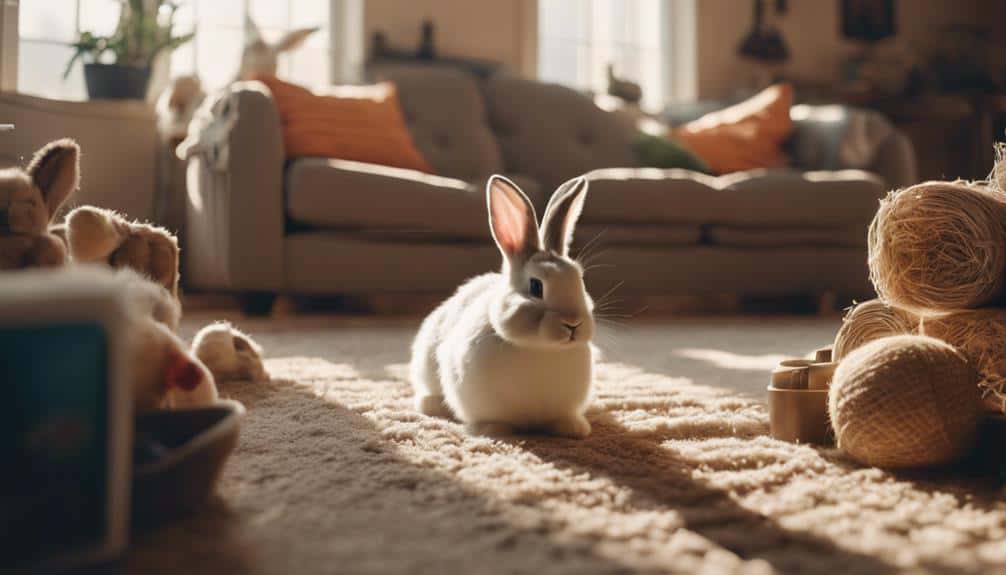
Rabbits are social creatures that thrive on interaction and companionship. They need attention and care, and keeping them inside as house rabbits is the best way to guarantee they get it.
One of the biggest advantages of indoor living is that you can keep a close eye on your rabbits' health and behavior. You can easily monitor their living area to make sure it's clean and safe, and keep them entertained with toys and activities to prevent boredom and promote their well-being.
However, there are some downsides to keeping rabbits indoors. For one thing, you'll need to clean their living space more frequently to maintain hygiene. Additionally, indoor rabbits may not get as much fresh air and sunlight as outdoor rabbits, which can be a drawback.
Despite these challenges, the benefits of indoor living for rabbits often outweigh the disadvantages when you provide proper care and attention.
Factors to Consider for Outdoor Rabbits
When you're thinking about moving your rabbits to outdoor living, there are a few key things to keep in mind to make sure they're safe and happy.
One of the most important things is to provide them with a good place to live. This means a shelter that's secure, dry, and well-ventilated to protect them from predators and harsh weather.
You'll also want to make sure they stay warm, especially when the temperature drops. Give them plenty of bedding like hay or straw, and consider using heat lamps if it gets really cold.
Before you move them outside full-time, give them some time to get used to it. Start with short periods outside and gradually increase the time as they get more comfortable. Keep a close eye on them, especially when it's cold, to make sure they're doing okay and not showing any signs of distress.
It's also important to remember that outdoor rabbits have different needs than indoor ones. So, make sure you're providing a safe and suitable environment for them. With a little planning and care, your rabbits can thrive outside.
Ensuring Safety for Indoor Rabbits
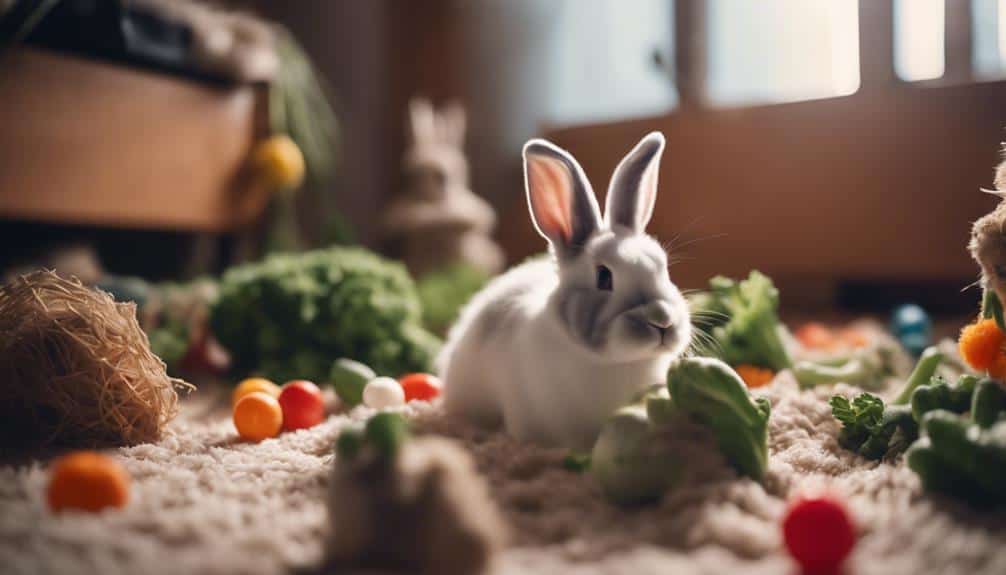
Creating a safe environment for your indoor rabbits is crucial. When keeping them indoors, make sure they've a spacious and escape-proof enclosure to prevent them from getting into hazardous areas. Rabbits are clever and can squeeze through tiny openings, so ensure the enclosure is secure.
They're also sensitive to temperature changes, so provide a warm and comfortable space for them. Use bedding like hay to keep them cozy and to absorb their waste effectively. A clean and comfortable environment will help keep your rabbits happy and healthy.
Rabbits are social animals and thrive with company, so consider getting a companion for them to snuggle with. Also, keep in mind that rabbits love to chew on things, so make sure to keep all electrical cords, toxic plants, and small objects that could be swallowed out of reach.
When you need to move your rabbits outside for exercise, always supervise them closely to prevent any accidents. With a little planning and attention, you can create a safe and happy environment for your indoor rabbits.
Providing Enrichment for Outdoor Rabbits
Outdoor rabbits need environments that let them act on their natural behaviors and instincts. When you're thinking about where your rabbits live, it's essential to provide them with outdoor enclosures that offer plenty of space.
These spaces should allow them to hop, jump, and engage in their natural behaviors. Your rabbit outside needs different levels to jump onto, cozy hiding spots, and enough room to freely run and play. You want them to be able to do what comes naturally, without feeling cramped or restricted.
As the weather gets colder, you'll need to take some extra steps to keep your rabbits warm and comfortable. Add some extra bedding to their enclosure to keep them cozy. Also, make sure they've shelter from the wind and rain. It's also important to check their water bottles twice a day, especially in the colder months, to make sure they don't freeze.
When you move your bunnies outdoors, make sure the enclosure is large enough. A good rule of thumb is to have a minimum size of 3m x 2m x 1m (10ft x 6ft x 3ft) for a pair of rabbits. This ensures they've enough room to exercise and thrive in their outdoor environment.
Making the Decision: Inside or Outside?
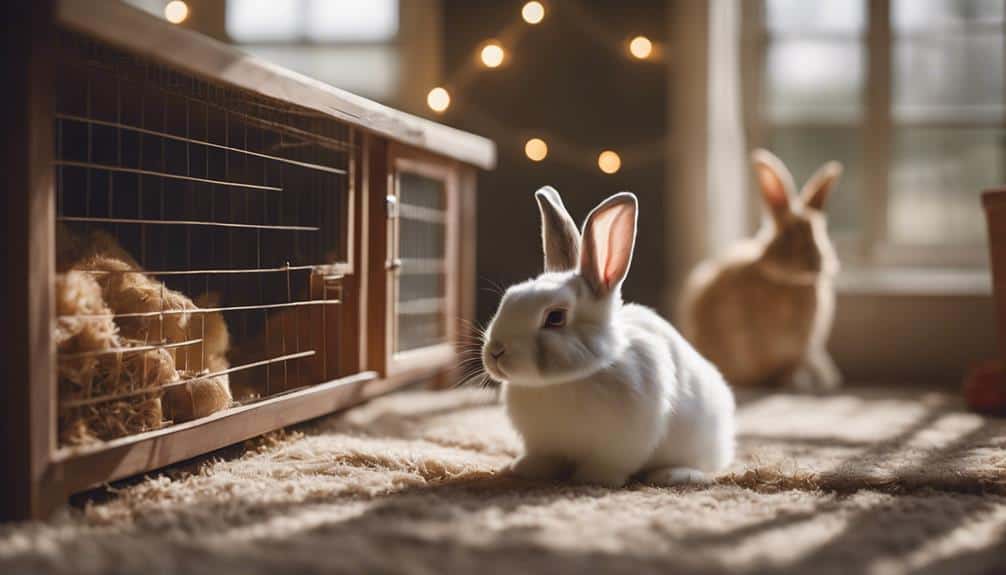
So, you're wondering whether to keep your rabbit inside or outside. Let's weigh the pros and cons of each option.
Indoor rabbits are pretty safe from harsh weather and predators. They also tend to live longer because they're not exposed to as many health risks. However, they need to stay active to avoid getting bored or obese.
One way to compromise is to give them a designated outdoor area to play in.
On the other hand, outdoor rabbits get to enjoy natural sunlight and fresh air, which are really important for their well-being.
But, they need to be kept warm during the colder months.
If you decide to keep your rabbit inside, make sure they've enough space to move around, access to hay and fresh water, and regular interaction with you to keep them social.
Ultimately, the decision to keep your rabbit inside or outside depends on your lifestyle and what’s best for your furry friend. Many owners find that keeping rabbits in small spaces is manageable, as long as the environment is enriched with toys and safe areas for them to explore. It’s essential to ensure they have enough room to hop and stretch, regardless of whether they are indoors or outdoors, to promote their physical and mental well-being.
Conclusion
So, whether your rabbit lives indoors or outdoors really depends on your individual circumstances and what's best for your furry friend.
For instance, take Sarah's situation. She realized that there were a lot of predators in her area, so she decided to keep her rabbit indoors.
The most important thing to consider is the well-being and safety of your rabbit. That should be your top priority when deciding where your rabbit will call home.

